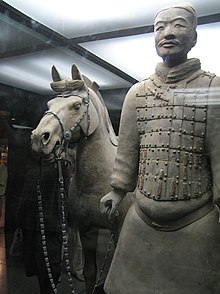The day after we arrived in England from
Zimbabwe, I went out on a little mission; namely, to investigate the offerings
of the British confectionary industry. I effected this mission at the nearby
corner shop. Apart from being rather taken aback by the discovery that Cadbury was not a Zimbabwean brand, I was generally most satisfied with the
results of my research.
When I went to the counter to pay for my
selection, and the cheery Indian man behind it (yes, they have Indians
in England too!) told me the price, the realisation suddenly dawned on me that
I was completely unfamiliar with British currency. In a mildly panicked
fluster, I regarded the pile of assorted coins in my hand, and then just thrust
the whole lot out to the man, for him to take the appropriate amount.
Well, I found this little episode so
unspeakably embarrassing that I made my way back home and immediately stationed
myself at the dining room table with a comprehensive array of coins before me,
and proceeded to make a careful study of them, that I might never again be
placed in a position of such shame by my pecuniary ignorance.
And here’s the thing. I memorised the
identity of every British coin in a matter of about 45 seconds. The coins are
wonderfully designed, each with a size, weight, shape, or combination of these factors peculiar to that coin, making each one instantly recognisable, even at a
distance, in the dark, in the depths of a pocket or handbag.
What a startling contrast to the august,
worthy currency that is the legal tender of 17 states of the European Union.
For those of you who are familiar with the
euro, here is a little quiz. Those of you not familiar with it, feel free to
hang around and watch.
1) This coin is:
A. €1
B. €2
2) This coin is:
A. 20c
B. 50c
3) This coin is:
A. 1c
B. 2c
C. 5c
4) This note is:
A. €10
B. €50
C. €200
ANSWERS
1. B
2. A
3. C
4. C
SCORE
All
correct: Congratulations! Either you fluked (you
had a 2.8% chance of doing so), or you really know your euro!
Three
correct: You are definitely among those with a
privileged knowledge of the European currency.
Two
correct: Not bad. At least you are likely to pay
the correct amount for your purchases half the time.
One
correct: Better than none at all.
None
correct: Join the club.
The euro was introduced in 2000, and notes
and coins started circulating in 2002. This makes it a comparatively new
currency. Now, if you have a currency that doesn’t make much sense but has been
around for ages, then there is a certain case for keeping it – because it would
be a hassle to change it to something more user-friendly. But in this case, a currency was being
designed from scratch. There were all the colours of the visible spectrum to
choose from; there could be the most magnificent works of art embossed upon the
notes and coins; they could be square, triangular, shaped like animals (how
cool would that be?); the euro could be the envy of every country with a frumpy-looking
currency. Given the above, why oh why, please tell me, would you go and churn
out a load of coins which all look the same and a note which is virtually
indistinguishable in poor light from a note 20 times its value?
It puts me in a very frustrating position
when I am in a eurozone country, and I have to pay for something in a shop. I
stand there for interminable minutes, poking around in an amateurish fashion at
a handful of coins, trying to identify those which will most efficiently serve
my purpose, and wanting to cry out at the shop assistant and customers in the
steadily growing queue behind me, “I’m not like all those other clueless
tourists, you know! I’ve been using the euro for ages!” But I don’t. Because the shop assistant and gathering
customers would just roll their eyes and mutter, “Oh, these stupid, stupid
tourists.”
In a quest to find specimens of notes and
coins from which to draw inspiration, I have just typed “Cool notes and coins”
into Google Images. I nearly closed the computer and went to make a cup of tea
when I saw that of the first 20 images proposed, no fewer than 12 were pictures
of euros and pounds. I realised it was probably due to my geographical location
and to the fact that my last few Google searches have involved the euro, so I
decided to put the cup of tea on hold and do another search.
This time, “beautiful money” yielded the
following:
The old Dutch currency:
I bet they have mixed feelings about the
euro in their day-to-day banknote-handling activities.
The French Pacific territories:
Another European currency whose beautiful
notes had to make way for the dowdy euro.
The
Comoros franc:
Breathtakingly evocative.
Canada – pictures of people having fun. What
a marvellous theme for banknotes.
And, I’m exceedingly proud to note,
Zimbabwe’s hundred-trillion-dollar note (now – in one sense unfortunately – replaced
with the more dependable US dollar) made it into the top twenty results.
And finally, my vision of animal-shaped
banknotes has come true:

























